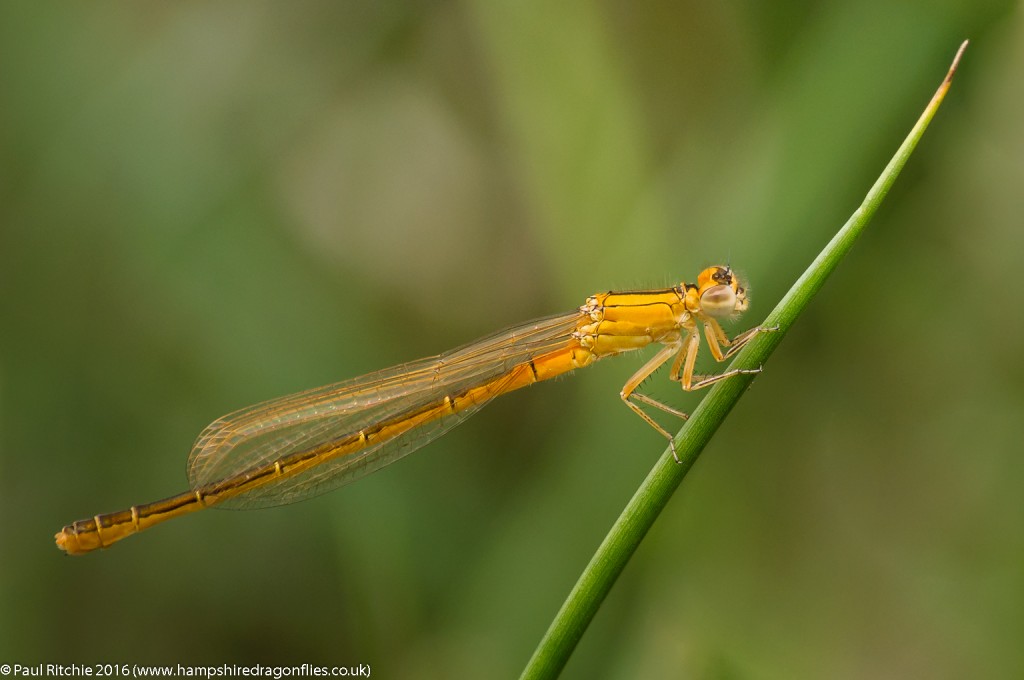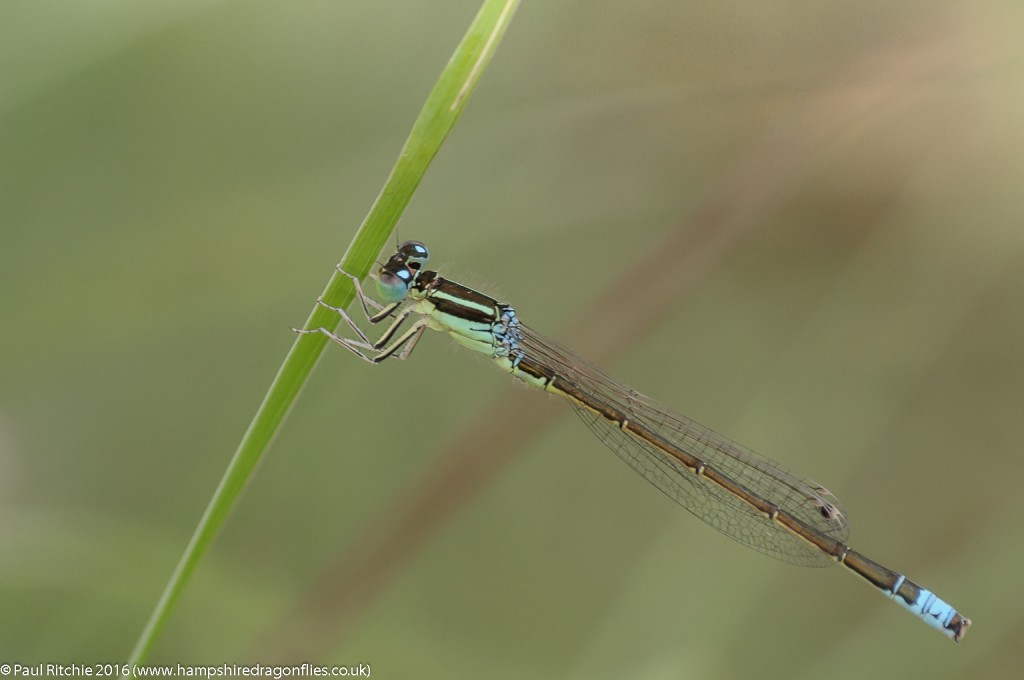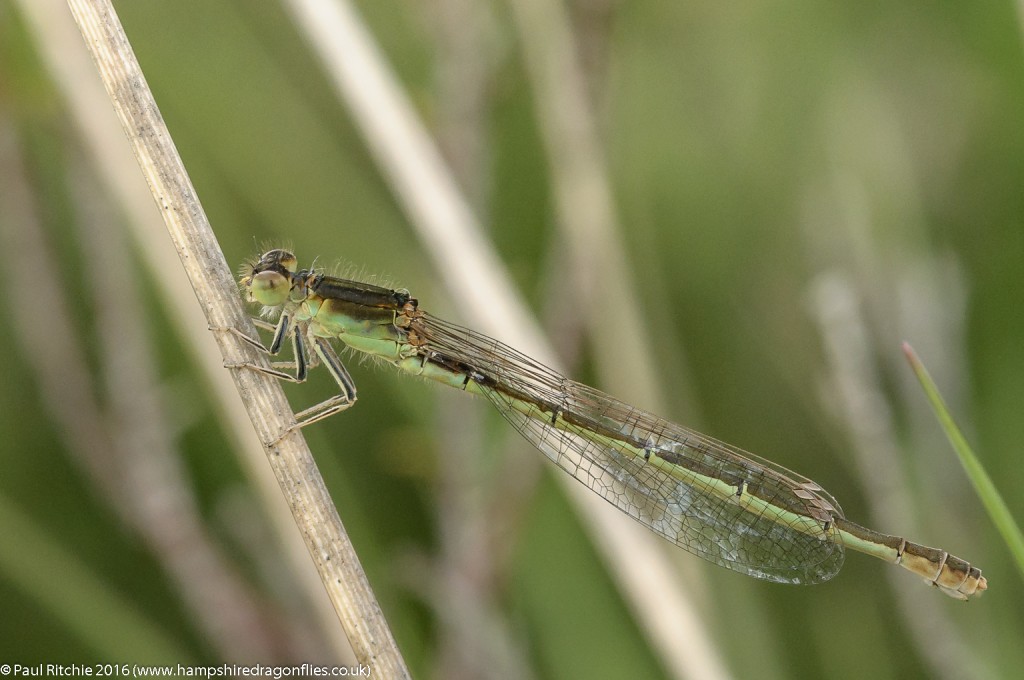There is obviously a bucket list for Odonata; usually the rarest, most local or migrant speciality like the Lesser or Vagrant Emperor, the Red-veined Darter, the various Emeralds etc. Yes, it’s a ‘tick’ to get these species, but in the case of migrants or rarities I find it far more enjoyable to encounter them by being at the right place at the right time.

One of these rare species is the Scarce Blue-tailed Damselfly, which is a native of our Isle. What makes them rare is their exacting habitat requirements, although with stories of colonising shallow tractor/bulldozer/motocross tracks they are opportunistic.

There is no doubt that the best environment to experience this jewel of the damselfly species is in their preferred natural habitat; usually boggy flushes with healthy water quality and vibrant emergent vegetation, especially Water St. John’s Wort.

In the New Forest we are fortunate to have a few perennial breeding populations. There is a small colony along the Ober Water where you may be lucky to spot up to half-a-dozen on a good day, but by far the best location is the boggy flushes straddling Latchmore Brook. A Scientific survey a few years ago counted thousands.

It took me a few years to pinpoint the key area ,despite several clues, and perhaps quite-rightly the exact grid reference was left vague. This is a good thing, because the last thing this species needs is a herd of bucket-listers congregating on-mass and destroying their habitat.

Naturally I always look forward to my first Latchmore foray, full of hope and often disappointed, but the good times out-weigh the bad, with several successful excursions over the past few years.
It’s a tranquil place when the sun isn’t guaranteed; and although a sunny day can offer the best dragonfly action, the hoards of picnickers and dog walkers can distract on a hot day during the high season.

Thankfully the tourists stay reasonably close to the car park. Sometimes too close. Never understood why someone should travel miles to picnic a few metres from their car? However this is to our advantage, and provided you are willing to walk that extra mile you can be in a natural paradise with plenty of birdsong guiding you to peace.
The ‘aurantiaca’ phase of the female Scarce Blue-tailed is quite-rightly considered a prize among dragonfly aficionados; the vibrant immature orange tones being entirely unlike any other damselfly colour form. A beautiful sight in stunning prom dress before maturity turns her into a quite drab matt green fully-formed adult.

However it is important to appreciate this special little damselfly in all its stages. The mature males out-shine their mates in glorious technicolor yet themselves are a little drab to begin with.

Drab or not, encountering an immature male is a first for me, likewise the freshly-emerged female. During an enjoyable two days the only stage I didn’t encounter was the quite beautiful transitional phase from orange to green, but their season has only just begun.
